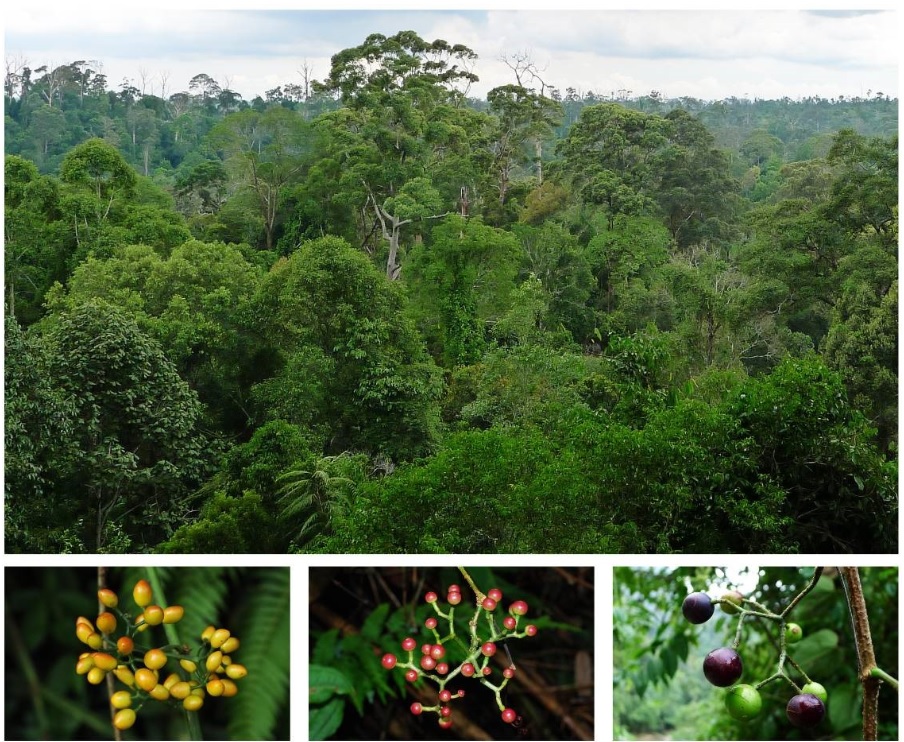How did biotic exchange between Asia and Australia occur across the geologically and topographically complex Malesian region in space and time? A new case study published in Cladistics has shed light on this question.
Prof. CHEN Zhiduan’s group from the Institute of Botany of the Chinese Academy of Sciences and international collaborators carried out a comprehensive biogeographic analyses with intensive taxon sampling of Tetrastigma (in the grape family Vitaceae) to illustrate the long attractive pattern of Asia-Australian biotic exchange across the Wallacean region. As dominant climbers in rainforests and subtropical forests from Asia to Australia, the genus represents an ideal model to address the Asia-Australian floristic exchange pattern.
Previous studies suggested that the convergence of the Sunda and Sahul shelves promoted biotic exchange between Asia and Australia. The geological activity raised substantial islands in between and might act as stepping-stones for dispersal events.
In Tetrastigma, the researchers inferred the genus has originated in continental Asia and split from the newly segregated genus Pseudocayratia in the early Eocene. Dispersal events might have started in the late Eocene but mainly proceeded in the late Miocene. The timing shows a consistent process of floristic exchange with the terrestrial connections between Asia and Australia.
In addition, this study provides new evidence for asymmetrical floristic exchange between the two regions: a southward-dominated dispersal in Tetrastigma. Continental Asia is inferred as the most important source area while the Sunda region serves as the biggest sink. This trend is in line with the previous hypothesis: organisms tend to migrate from a larger species pool to a smaller one.
Following the expansion of wet tropical forests across Wallace's Line and beyond, these findings also suggest that successful colonization is not only determined by dispersal ability but also by habitat preference.
This study provides new clues of floristic exchange between Asia and Australia. With more and more case studies completed, researchers can arrive at a general pattern of the Asia-Australian biotic exchange, and further elucidate the evolutionary and biogeographic processes of biodiversity formation.

ArticleLink: https://doi.org/10.1111/cla.12462
Contact:
Email: liminlu@ibcas.ac.cn
Institute of Botany, Chinese Academy of Sciences
How did biotic exchange between Asia and Australia occur across the geologically and topographically complex Malesian region in space and time? A new case study published in Cladistics has shed light on this question.
Prof. CHEN Zhiduan’s group from the Institute of Botany of the Chinese Academy of Sciences and international collaborators carried out a comprehensive biogeographic analyses with intensive taxon sampling of Tetrastigma (in the grape family Vitaceae) to illustrate the long attractive pattern of Asia-Australian biotic exchange across the Wallacean region. As dominant climbers in rainforests and subtropical forests from Asia to Australia, the genus represents an ideal model to address the Asia-Australian floristic exchange pattern.
Previous studies suggested that the convergence of the Sunda and Sahul shelves promoted biotic exchange between Asia and Australia. The geological activity raised substantial islands in between and might act as stepping-stones for dispersal events.
In Tetrastigma, the researchers inferred the genus has originated in continental Asia and split from the newly segregated genus Pseudocayratia in the early Eocene. Dispersal events might have started in the late Eocene but mainly proceeded in the late Miocene. The timing shows a consistent process of floristic exchange with the terrestrial connections between Asia and Australia.
In addition, this study provides new evidence for asymmetrical floristic exchange between the two regions: a southward-dominated dispersal in Tetrastigma. Continental Asia is inferred as the most important source area while the Sunda region serves as the biggest sink. This trend is in line with the previous hypothesis: organisms tend to migrate from a larger species pool to a smaller one.
Following the expansion of wet tropical forests across Wallace's Line and beyond, these findings also suggest that successful colonization is not only determined by dispersal ability but also by habitat preference.
This study provides new clues of floristic exchange between Asia and Australia. With more and more case studies completed, researchers can arrive at a general pattern of the Asia-Australian biotic exchange, and further elucidate the evolutionary and biogeographic processes of biodiversity formation.

ArticleLink: https://doi.org/10.1111/cla.12462
Contact:
Email: liminlu@ibcas.ac.cn
Institute of Botany, Chinese Academy of Sciences
